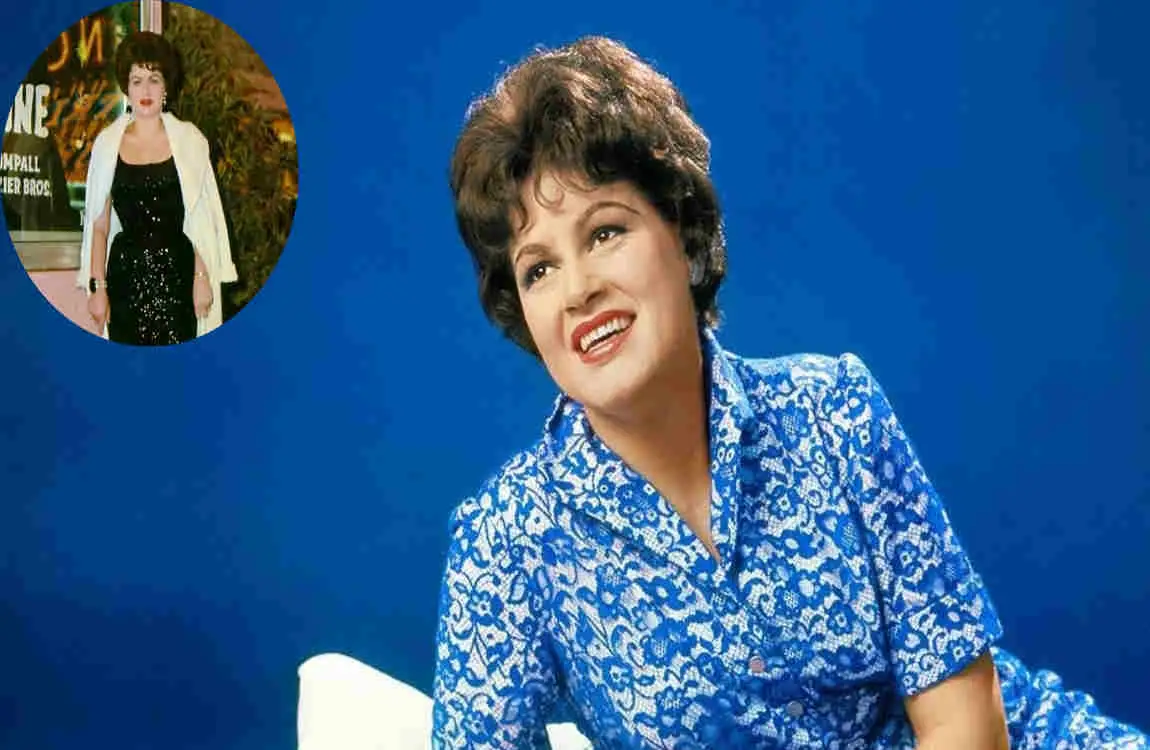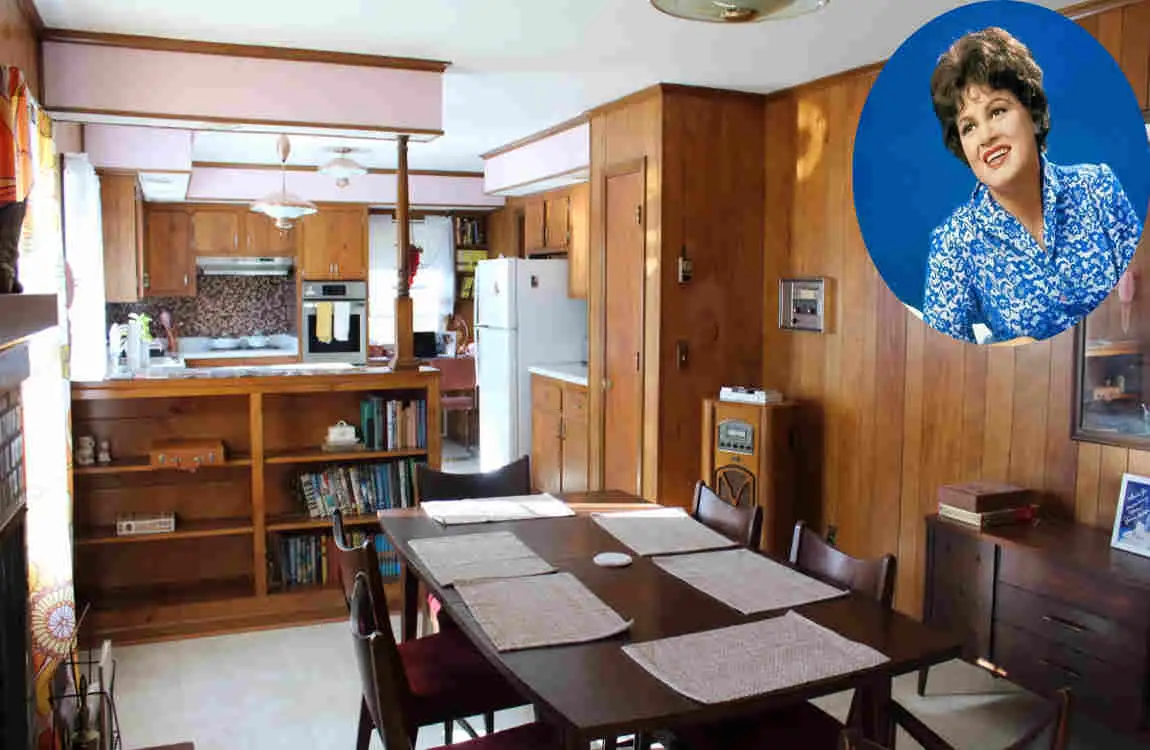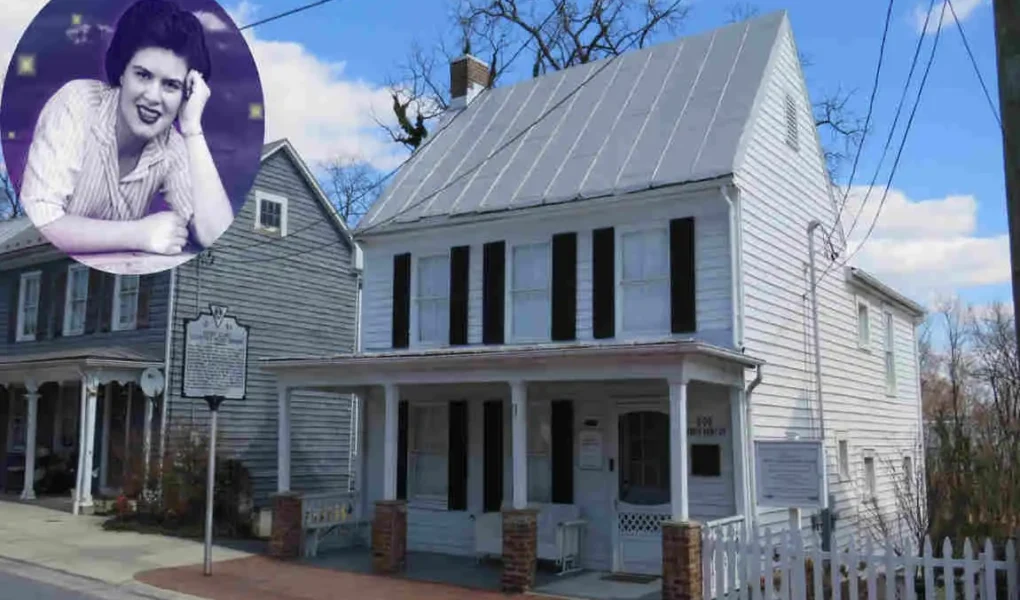Imagine stepping back in time to the golden era of country music, where a simple Nashville home holds the echoes of one of the genre’s most beloved voices. Patsy Cline, with her powerful ballads and trailblazing spirit, left an indelible mark on music history. Her story isn’t just about hit songs—it’s about a life lived with passion and resilience. Today, fans from around the world flock to Nashville to connect with her legacy, and at the heart of it all is the Patsy Cline House. This unassuming residence isn’t just bricks and mortar; it’s a portal to the past, offering a glimpse into the woman behind the legend.
We’ll dive into her life, the house’s history, visiting tips, and much more. By the end, you’ll see why this place isn’t just a house—it’s a living piece of musical heritage. So, grab your favorite Patsy Cline playlist, and let’s journey through the story of the Patsy Cline house.
Patsy Cline’s influence stretches far beyond her tragically short career. Born Virginia Patterson Hensley in 1932, she rose from humble beginnings in Virginia to become a Nashville icon. Her voice, rich and emotive, bridged the worlds of country and pop, making her a pioneer for women in the music industry. Hits like “Crazy” and “I Fall to Pieces” still resonate today, proving her timeless talent.
| Attribute | Details |
|---|---|
| Full Name | Virginia Patterson Hensley |
| Date of Birth | September 8, 1932 |
| Place of Birth | Winchester, Virginia, United States |
| Nationality | American |
| Spouse(s) | Gerald Cline (1953–1957), Charlie Dick (1957–1963) |
| Children | Julie Dick, Randy Dick |
| Notable Works | “Crazy,” “I Fall to Pieces,” “Walkin’ After Midnight” |
| Net Worth | Estimated $10 million (adjusted for inflation at time of death) |
| Current Residence | Deceased (Died in a plane crash on March 5, 1963, Camden, Tennessee) |
But what makes the Patsy Cline House so special? Purchased in 1961, this modest home in Nashville’s Goodlettsville area became her sanctuary during her peak fame. It represented stability amid the chaos of stardom and personal tragedies. For fans, visiting the Patsy Cline House is like walking in her footsteps, feeling the warmth of a life that touched millions.
Who Was Patsy Cline?

Patsy Cline wasn’t just a singer; she was a force of nature who redefined the country music genre. Born on September 8, 1932, in Winchester, Virginia, she grew up in a working-class family during the tough economic times of the Great Depression. From a young age, Patsy demonstrated a natural talent for music, teaching herself to play the piano and singing in local churches and talent shows. Her early life wasn’t easy—her family moved often, and she faced health issues like rheumatic fever. But these challenges only fueled her determination.
As a teenager, Patsy started performing on local radio stations. She adopted the stage name “Patsy” from her middle name, Patricia, and began honing her unique style. By the 1950s, she signed with Four Star Records, but success didn’t come overnight. Patsy juggled day jobs while chasing her dream, a story many aspiring artists can relate to today.
Her big break came in 1957 with “Walkin’ After Midnight,” a hit that blended country twang with pop appeal. This song catapulted her onto national TV shows, such as Arthur Godfrey’s Talent Scouts. Patsy’s voice—deep, soulful, and full of emotion—set her apart. She wasn’t afraid to experiment, crossing over into pop charts at a time when country stars rarely did.
Patsy’s rise to fame accelerated in the early 1960s. Songs like “I Fall to Pieces” and “Crazy” (written by Willie Nelson) topped the charts, showcasing her remarkable ability to convey heartbreak and longing. She became one of the first women to headline her own shows in Nashville, paving the way for artists like Dolly Parton and Reba McEntire. Her crossover success proved that country music could appeal to a broader audience.
Tragically, Patsy’s life ended in a plane crash on 5 March 1963, at age 30. She left behind two young children and a grieving music world. Yet, her impact endures. Posthumous releases, such as “Sweet Dreams,” kept her music alive, and she was inducted into the Country Music Hall of Fame in 1973—the first solo female artist to receive this honor.
Why does Patsy’s story still resonate? It’s her authenticity. In an era of polished stars, she was raw and honest, singing about life’s pains and joys. Fans connect with her vulnerability. If you’re exploring the Patsy Cline house, understanding her biography adds depth—it’s like meeting the woman who lived there.
Her legacy extends beyond music. Patsy influenced fashion with her bold style and empowered women in a male-dominated industry. Think about it: How many artists today draw from her blueprint? Her story inspires resilience, reminding us that true talent shines through adversity.
In short, Patsy Cline’s biography is a tale of grit and glory. From Virginia roots to Nashville stardom, she became a legend whose voice still echoes. As we move to her home’s history, keep in mind how her personal life is intertwined with her career.
Early Life and Struggles
Patsy’s childhood in Virginia shaped her tough spirit. Moving 19 times by age 15 built her adaptability. A bout with rheumatic fever at 13 damaged her throat but deepened her voice—a silver lining she often joked about.
Rise to Stardom
The 1950s were her proving ground. Local gigs led to a record deal, but hits were scarce until “Walkin’ After Midnight.” This song’s success opened doors, but Patsy fought for creative control in a restrictive industry.
Career Milestones
From Grand Ole Opry appearances to chart-topping albums, Patsy’s milestones are legendary. “Crazy” alone sold millions, blending genres seamlessly.
Lasting Legacy
Today, her music influences everyone from Adele to Kacey Musgraves. Patsy’s legacy proves that timeless talent never fades.
The History of Patsy Cline’s House
Nestled in the quiet suburbs of Goodlettsville, just north of downtown Nashville, the Patsy Cline house stands as a testament to simpler times. This ranch-style home, built in the 1950s, isn’t a grand mansion—it’s a cozy, single-story structure with about 1,500 square feet. Featuring brick exteriors, large windows, and a welcoming front porch, it reflects the mid-century American dream. Patsy and her husband, Charlie Dick, bought it in 1961 for around $20,000, a steal even then.
| Feature | Details |
|---|---|
| Address | 608 S. Kent St., Winchester, Virginia |
| Architecture Design | Simple two-story, three-bay building with a front porch and tin roof; originally a mid-19th century log cabin mostly covered by walls except near the front door. The house is about 1,000 sq. ft. with one bedroom on the second floor. It is a humble working-class home with early 20th-century modifications. |
| Specifications | Two-story frame dwelling, approximately 1,000 square feet, single bedroom upstairs where Patsy’s family slept. |
| Worth | Renovated into a museum by Celebrating Patsy Cline, Inc. for about $100,000; open to the public since 2011. The house’s market value is not precisely given but it remains a preserved historic landmark. |
| History | Patsy Cline lived there from 1948 to 1953 during her youth and intermittent later visits. The house was owned by her mother who worked as a seamstress. Patsy developed her early singing career while living there. The house was placed on the Virginia Landmarks Register and National Register of Historic Places in 2005 and became a National Historic Landmark in 2021. It is now a museum honoring her legacy. |
For Patsy, this house meant stability. After years of touring and instability, it became her haven. She lived there with her family from 1961 until she died in 1963. Imagine her unwinding after a show, perhaps humming tunes in the kitchen or playing with her kids in the backyard. The Patsy Cline House was more than a residence; it was where she balanced fame with family life.
Key events unfolded here. Patsy hosted friends like Loretta Lynn, sharing laughs and advice. It was a hub for Nashville’s music scene, with impromptu jam sessions. Tragically, after her plane crash, the house became a place of mourning, where fans and family gathered to remember her.
Historically, the Patsy Cline House holds cultural significance. It’s listed on the National Register of Historic Places, preserving its role in music heritage. For fans, it’s a link to Nashville’s evolution from a sleepy town to Music City. The house symbolizes Patsy’s grounded nature—she chose modesty over extravagance.
Let’s break it down: The home’s era mirrors post-war optimism, with features like hardwood floors and a fireplace that Patsy loved. She personalized it with her style, adding touches of glamour amid everyday comfort.
Why does this matter? In a city full of flashy attractions, the Patsy Cline House offers authenticity. It reminds us of Patsy’s real estate history—proof that even stars sought normalcy.
Location and Architecture
Goodlettsville’s peaceful vibe suited Patsy. The stunning house, on a half-acre lot, boasts mid-century design with clean lines and functional spaces.
Life in the House
Daily routines included family dinners and songwriting. Patsy cherished quiet moments here, away from the spotlight.
Significant Events
From birthday parties to heartfelt conversations, the house saw joy and sorrow. It’s where Patsy planned her final tour.
Cultural Heritage
As part of Nashville’s music landmarks, it educates visitors on the roots of country music.
Here’s a quick table summarizing the house’s key details:
Aspect Details
Location Goodlettsville, Nashville, TN
Built 1950s
Style Ranch-style, single-story
Size Approximately 1,500 sq ft
Purchase Year 1961 by Patsy and Charlie Dick
Historical Status National Register of Historic Places
This table highlights why the Patsy Cline House is more than just a building—it’s a history preserved.
Visiting the Patsy Cline House: What to Expect

Planning a trip to the Patsy Cline House? You’re in for a treat, but please note that it’s private property. Not open for interior tours like some celebrity homes, but fans can drive by or join guided Nashville tours that include a stop. Respect the current owners—take photos from the street, but refrain from trespassing.
What will you see? The exterior remains charming, with its brick facade and manicured lawn evoking 1960s suburbia. If you’re lucky, exterior glimpses reveal the porch where Patsy used to relax. Nearby, explore related spots, such as the Patsy Cline Museum in downtown Nashville, which is packed with memorabilia.
Combine your visit with other attractions. The Grand Ole Opry is a short drive away, where Patsy performed. Or check out the Country Music Hall of Fame for exhibits on her life. These make a full day of country music immersion.
Tips for the best experience: Visit in spring or fall for milder weather. Book a guided tour through companies like Gray Line Nashville—they provide context and stories. Please arrive early to avoid crowds, and pair it with a Patsy playlist for the drive.
Have you visited a music legend’s home before? The Patsy Cline House offers that intimate connection. It’s not flashy, but that’s its charm—real and relatable.
Access and Tours
Private but viewable from public roads. Opt for bus tours for narrated insights.
Exterior Highlights
Look for the iconic porch and windows that hint at Patsy’s cozy life.
Nearby Attractions
- Grand Ole Opry
- Patsy Cline Museum
- Ryman Auditorium
Practical Tips
Go weekdays for fewer people; bring binoculars for distant views.
Why Patsy Cline’s House is a Cultural and Musical Landmark

The Patsy Cline house symbolizes Patsy’s down-to-earth life despite fame. While stars today flaunt luxury house, Patsy chose simplicity, making her relatable and approachable. This home shows how she stayed grounded, hosting barbecues and family time amid hit records.
Culturally, preserving such homes keeps music history alive. They educate on artists’ influences, like how Patsy’s Nashville home reflects the city’s country boom. Organizations fight to maintain these sites against urban development.
Compare it to other Nashville gems: Johnny Cash’s home or Dolly Parton’s childhood spot. Each adds to Music City’s tapestry, drawing tourists who boost the economy.
Nashville’s identity as Music City owes much to places like the Patsy Cline House. It attracts fans worldwide, fostering a sense of community and inspiration.
Why visit? It deepens your appreciation for the country’s roots. Picture standing outside, feeling the legacy—it’s powerful.
Symbol of Grounded Fame
Patsy’s choice of a modest home highlights her values.
Preservation Importance
Historic homes prevent cultural erasure.
Comparisons to Other Homes
Like Elvis’s Graceland, but more intimate.
Contribution to Nashville
Enhances tourism and musical pride.
Stories and Anecdotes Related to the Patsy Cline House

Stories bring the Patsy Cline house to life. Patsy’s daughter, Julie, recalls mom singing lullabies in the living room, creating warm memories. Friends like Loretta Lynn visited often, sharing tears and tunes over coffee.
Famous photos show Patsy on the porch, smiling with her kids—capturing joy amid chaos. Interviews from the era mention that she hosted parties, where she’d belt out songs spontaneously.
Legends swirl too: Some say her spirit lingers, with fans reporting eerie feelings. But most tales are heartwarming, like how Patsy helped neighbors, embodying Southern hospitality.
Quotes add flavor: Charlie Dick once said, “That house was our little piece of heaven.” These anecdotes build emotional ties—don’t they make you want to visit?
Family Memories
Julie’s stories of everyday life.
Famous Visits
Loretta’s anecdotes of friendship.
Myths and Legends
Ghost tales add intrigue.
Emotional Quotes
Words from those who knew her best.
The Patsy Cline House in Contemporary Country Music Tourism
Today, the Patsy Cline House draws modern fans eager to connect with her legacy. Social media buzzes with photos, turning it into a pilgrimage site.
It plays a significant role in Nashville’s tourism boom, with millions of visitors coming to Music City each year. Events like CMA Fest often reference Patsy, linking her modern home to festivities.
Fan gatherings often take place nearby, with tribute concerts inspiring new artists to emerge. Think how Kacey Musgraves cites Patsy as an influence—her house sparks creativity.
Engage by sharing your visit online. How does it inspire you?
Modern Fan Engagement
Social media and virtual tours keep it relevant.
Tourism Industry Role
Boosts the local economy.
Events and Gatherings
Festivals honoring her.
Inspiration for New Artists
Encourages bold careers.
Preserving the Patsy Cline House: Challenges and Efforts

Preserving the Patsy Cline house is no easy task. Urban growth poses a threat to historic sites, as maintenance costs continue to rise. Weather and age add wear.
Efforts shine through: The National Trust for Historic Preservation advocates, while fans donate via nonprofits like the Country Music Foundation.
Government grants help, but community involvement is key. Visitors can support the cause by purchasing merchandise or joining preservation groups.
You can help—visit responsibly and spread awareness.
Key Challenges
Development pressures and funding shortages.
Preservation Organizations
Nonprofits leading the charge.
How to Support
- Donate to music foundations
- Attend benefit events
- Advocate for historic status
Future Efforts
Ongoing campaigns ensure longevity.
Patsy Cline House FAQ
Where was Patsy Cline’s house located?
Patsy Cline’s most famous residence was located at 608 S. Kent Street in Winchester, Virginia. This was her home from 1948 until her untimely death in 1963.
What style was Patsy Cline’s house?
Patsy Cline’s house in Winchester is a modest, single-story brick bungalow. It reflects the simple architectural style common in mid-20th century American suburban homes.
How large was Patsy Cline’s house?
The house spans approximately 1,700 square feet. It features three bedrooms and one bathroom, which was suitable for Patsy, her husband Charlie Dick, and their daughter Julie.
Does anyone still live in Patsy Cline’s house?
No, the house is no longer a private residence. It was purchased by the city of Winchester in 2017 and has been converted into a museum dedicated to Patsy Cline’s life and career.
Can I visit Patsy Cline’s house?
Yes, you can visit Patsy Cline’s house, which is now the Patsy Cline Historic House museum. It’s open to the public for tours, allowing fans to explore the home and learn about her life.
What can I see at the Patsy Cline Historic House museum?
The museum offers a glimpse into Patsy Cline’s personal life. You can see:
- Restored rooms that reflect how the house looked when Patsy lived there
- Personal belongings and memorabilia
- Exhibits about her music career and impact on country music
- A gift shop with Patsy Cline merchandise
How much does it cost to visit the Patsy Cline Historic House museum?
As of 2025, the admission prices are:
- Adults: $10
- Seniors (65+): $8
- Children (6-12): $5
- Children under 6: Free
What are the operating hours of the Patsy Cline Historic House museum?
The museum is typically open:
- Wednesday to Saturday: 10 AM to 4 PM
- Sunday: 12 PM to 4 PM
It’s always a good idea to check the official website for any updates or changes to the schedule.
Is there parking available at the Patsy Cline Historic House museum?
Yes, there is a small parking lot adjacent to the museum. Street parking is also available in the surrounding neighborhood.
Can I take photos inside the Patsy Cline Historic House museum?
Photography for personal use is allowed inside the museum, but flash photography and tripods are prohibited to preserve the artifacts and exhibits.
Where Does Patsy Cline’s Currently Live?
Patsy Cline passed away in 1963 and therefore does not currently live anywhere. She lived in several homes during her lifetime, including a historic house in Winchester, Virginia, where she lived from 1948 to 1957. This house is now a museum known as the Patsy Cline Historic House. She also had a home in Goodlettsville, Tennessee, near Nashville, known as “Patsy Cline’s Dream Home,” which was owned by others and recently sold. Patsy Cline’s mother continued living in Winchester, Virginia, after Patsy’s death, but Patsy herself died in a plane crash in 1963.
Patsy Cline House Photos







